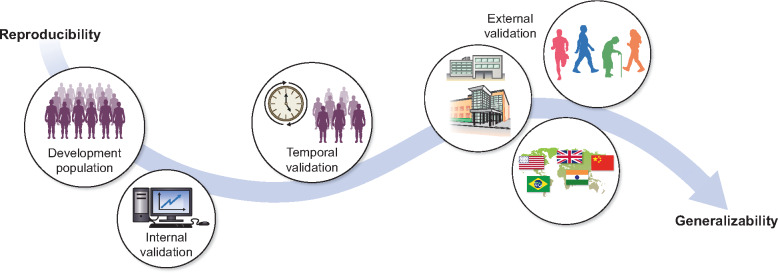FIGURE 1.
Illustration of different validation types. A developed prediction model can be validated in various ways and in populations that differ from the development cohort to varying degrees. Internal validation uses the patients from the development population and can therefore always be performed. As internal validation does not include new patients, it mainly provides information on the reproducibility of the prediction model. Temporal validation is often considered to lie midway between internal and external validation. It entails validating the model on new patients who were included in the same study as patients from the development cohort but sampled at an earlier or later time point. It provides some information on both the reproducibility and generalizability of a model. External validation mainly provides evidence on the generalizability to various different patient populations. Patients included in external validation studies may differ from the development population in various ways: they may be from different countries (geographic validation), from different types of care facilities or have different general characteristics (e.g. frail older patients versus fit young patients). Not every model needs to be validated in all the ways depicted. In certain cases, internal validation or only geographic external validation may be sufficient; this is dependent on the research question and size of the development cohort.

